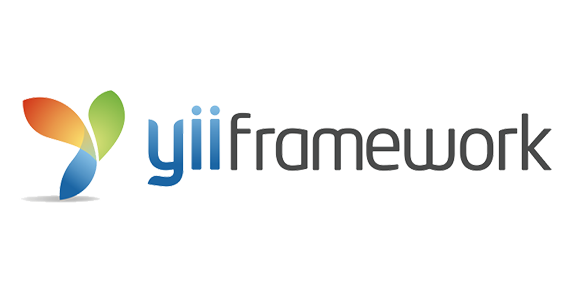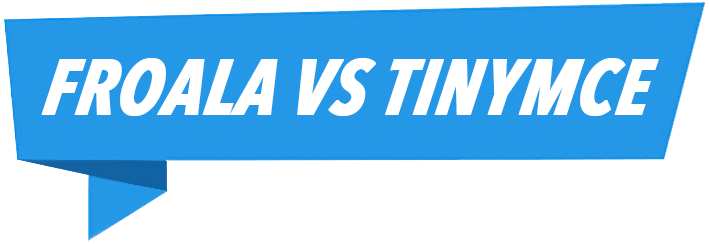Froala, Inc
- Getting Started
- Browser Support
- Languages Support
- Shortcuts
- Activation
- Examples
- Customize the Editor
- Use-cases
- Plugins
- APIs
- Development Frameworks
- Server Integrations
- Server SDKs
- Migration Guides
- Changelog

Yii Framework Froala Editor
Installation
The preferred way to install this extension is through composer.
To install it run:
php composer.phar require --prefer-dist froala/yii2-froala-editor
Alternatively, you can add it to the require section of composer.json.
"froala/yii2-froala-editor": "^2.6.0"
Usage
Once the extension is installed, you can use it in your code:
<?php echo froala\froalaeditor\FroalaEditorWidget::widget([
'name' => 'content',
'options' => [
// html attributes
'id'=>'content'
],
'clientOptions' => [
'toolbarInline'=> false,
'theme' =>'royal', //optional: dark, red, gray, royal
'language'=>'en_gb' // optional: ar, bs, cs, da, de, en_ca, en_gb, en_us ...
]
]); ?>
You can also useit with a model:
<?php echo froala\froalaeditor\FroalaEditorWidget::widget([
'model' => $model,
'attribute' => 'content',
'options' => [
// html attributes
'id'=>'content'
],
'clientOptions' => [
'toolbarInline' => false,
'theme' => 'royal', //optional: dark, red, gray, royal
'language' => 'en_gb' // optional: ar, bs, cs, da, de, en_ca, en_gb, en_us ...
]
]); ?>
Upload example
Using the basic Yii template make a new folder under /web/ called uploads.
For controler:
public function actionUpload() {
$base_path = Yii::getAlias('@app');
$web_path = Yii::getAlias('@web');
$model = new UploadForm();
if (Yii::$app->request->isPost) {
$model->file = UploadedFile::getInstanceByName('file');
if ($model->validate()) {
$model->file->saveAs($base_path . '/web/uploads/' . $model->file->baseName . '.' . $model->file->extension);
}
}
// Get file link
$res = [
'link' => $web_path . '/uploads/' . $model->file->baseName . '.' . $model->file->extension,
];
// Response data
Yii::$app->response->format = Yii::$app->response->format = Response::FORMAT_JSON;
return $res;
}
For model:
namespace app\models;
use yii\base\Model;
use yii\web\UploadedFile;
/**
* UploadForm is the model behind the upload form.
*/
class UploadForm extends Model
{
/**
* @var UploadedFile|Null file attribute
*/
public $file;
/**
* @return array the validation rules.
*/
public function rules()
{
return [
[['file'], 'file']
];
}
}
For the view:
<?= \froala\froalaeditor\FroalaEditorWidget::widget([
'name' => 'body',
'clientOptions' => [
'toolbarInline'=> false,
'height' => 200,
'theme' => 'royal',//optional: dark, red, gray, royal
'language' => 'en_gb' ,
'toolbarButtons' => ['fullscreen', 'bold', 'italic', 'underline', '|', 'paragraphFormat', 'insertImage'],
'imageUploadParam' => 'file',
'imageUploadURL' => \yii\helpers\Url::to(['site/upload/'])
],
'clientPlugins'=> ['fullscreen', 'paragraph_format', 'image']
]); ?>
For full details on usage, see the documentation.
Custom Buttons Example
The custom Buttons can be defined in JS files anywhere you want, in this example in /basic/assets/ folder.
In the view:
<?php $this->registerJsFile('/basic/assets/alert.js', ['depends' => '\Froala\Editor\FroalaEditorAsset']);?>
<?= \Froala\Editor\FroalaEditorWidget::widget([
'name' => 'body',
'clientOptions' => [
'toolbarInline' => false,
'height' => 200,
'theme' => 'royal',//optional: dark, red, gray, royal
'language' => 'en_gb',
'toolbarButtons' => ['fullscreen', 'bold', 'italic', 'underline', '|', 'paragraphFormat', 'insertImage', 'alert']
],
'clientPlugins' => ['fullscreen', 'paragraph_format', 'image']
]); ?>
In /basic/assets/alert.js:
$.FroalaEditor.DefineIcon('alert', {NAME: 'info'});
$.FroalaEditor.RegisterCommand('alert', {
title: 'Hello',
focus: false,
undo: false,
refreshAfterCallback: false,
callback: function () {
alert('Hello!');
}
}
);
For more details you refer to Custom Buttons
Do you think we can improve this article? Let us know.


